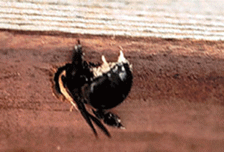These pests may be a hidden problem that will take a trained eye to find. We will inspect the property for termites and other wood destroying pests and conditions deemed likely to lead to an infestation.
Hidden Expense
For some people the mere mention of the word “Termite” conjures up images of their home collapsing into a pile of sawdust. Thankfully, this usually is not the case. Our WDI reports present valuable information on the conditions of the property you are planning on selling or purchasing.
A WDI inspection looks for visual evidence of current or past activity of wood destroying insects. Along with the potential for a infestation due to existing conditions. Once armed with this information you can take corrective measures to insure that your home is safe from these destructive pests.
Common Wood Destroying Insects in Our Area
Subterranean Termites
These are the most destructive pests in the United States, causing more than $2 billion in damages each year. They enter a home through tiny cracks in the foundation or slab or anywhere that soil is in contact with wood. If there is no easy entry point near the ground, termites will construct mud tubes on the side of a structure to gain access to above ground areas.
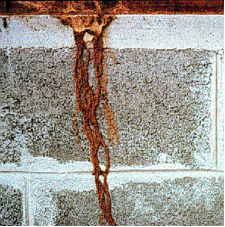
Powderpost Beetles
The adults of this species lay their eggs in cracks, joints, or imperfections in the lumber, then the eggs hatch and the larvae begins to burrow into the wood.
This beetle acquired the name for their ability to turn the wood they eat into a fine powder that is found either in the tunnels themselves or on the ground around exit holes where fully-grown adult beetles have emerged.
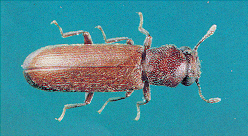
Deathwatch Beetle
It is called the deathwatch beetle because of the clicking sound it makes at night. Like many other species of beetle, they are hard to find since most of their life is spent inside a piece of wood. The beetle lays its eggs in natural depressions of wood such as cracks, joints, or pores, and once the eggs hatch the larvae begin to burrow their way into the wood where they feed for 6 years or more.
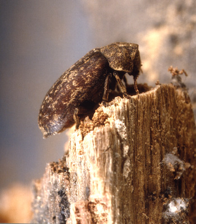
Carpenter Ant
Carpenter ants have a tendency to build nests in homes. This causes problems when the ants begin to hollow out structural beams to enlarge their nests. Carpenter ants usually begin their colonies in decaying wood and slowly work their way into more solid wood. This movement is slow so unless there is a satellite nest nearby, it can take a very long time before damage is apparent.
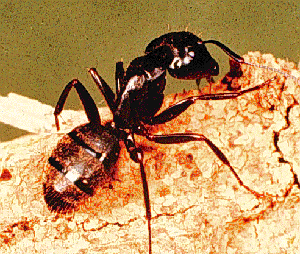
Carpenter Bee
Carpenter bees become pests when they begin to construct their nests in homes. Carpenter bees leave holes, about 1/2 inch in diameter, in almost any type of unprotected wood. These holes lead to tunnels ranging from 6 to 10 inches deep with several chambers.
